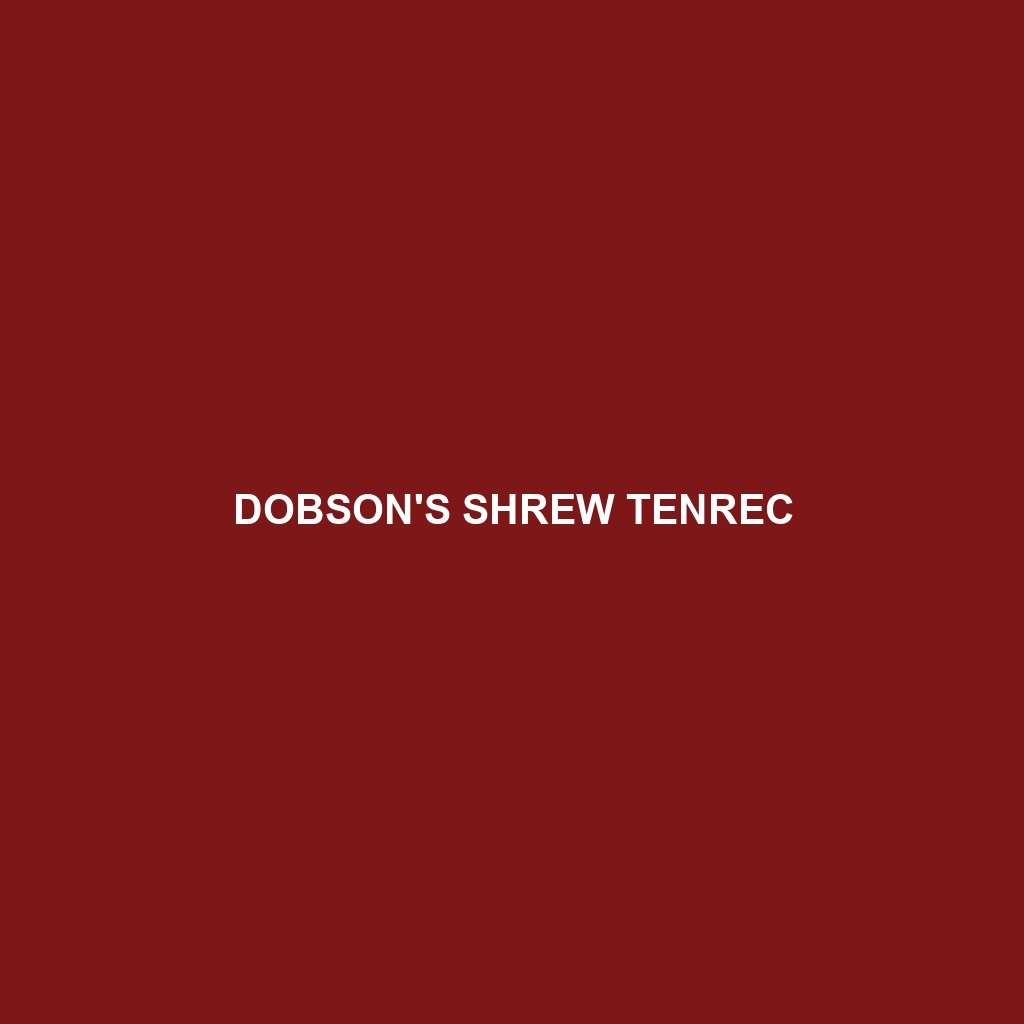Dobson’s Shrew Tenrec: A Fascinating Inhabitant of Madagascar
The Dobson’s Shrew Tenrec (Microgale dobsoni) is a small, nocturnal mammal endemic to Madagascar. Notable for its shrew-like appearance and unique ecological adaptations, this tenrec plays a crucial role in its native ecosystems. Despite its diminutive size, the Dobson’s Shrew Tenrec is a resilient and resourceful species, well-adapted to the diverse environments of Madagascar.
Physical Characteristics
Size: The Dobson’s Shrew Tenrec is a small mammal, typically measuring between 70 to 90 millimeters in length, not including its tail which can add an additional 50 to 70 millimeters. They generally weigh between 10 to 20 grams.
Coloration: This tenrec’s fur is usually a mix of brown and gray hues, offering excellent camouflage against the forest floor. The underbelly tends to be lighter, often a pale gray or white.
Special Features: The Dobson’s Shrew Tenrec has a pointed snout, which is highly sensitive and ideal for foraging. Its small, sharp teeth are perfect for an insectivorous diet. The tail is relatively long and can be used for balance and communication.
Behavior
Social Interactions: These tenrecs are generally solitary, though they may occasionally be seen in pairs during the breeding season. Communication is primarily through vocalizations and scent markings.
Feeding Habits: Dobson’s Shrew Tenrecs are insectivores, with a diet that includes insects, spiders, and other small invertebrates. They use their keen sense of smell and hearing to locate prey in the leaf litter.
Ecological Roles: As insectivores, they help control insect populations, making them vital to the health of their ecosystems. They also serve as prey for larger predators, thus contributing to the food web.
Habitat
Geographic Range: Endemic to Madagascar, the Dobson’s Shrew Tenrec is found in various habitats across the island, from tropical rainforests to dry deciduous forests.
Preferred Environment: They thrive in areas with dense vegetation and ample leaf litter, which provides both food and cover from predators.
Adaptations
Nocturnality: Being nocturnal helps them avoid many of the island’s daytime predators. Their large eyes and sensitive whiskers aid in navigating the dark.
Camouflage: Their coloration blends seamlessly with the forest floor, offering protection from predators.
Burrowing: They are proficient diggers, often creating small burrows or using natural crevices for shelter.
Conservation Status
The International Union for Conservation of Nature (IUCN) currently lists the Dobson’s Shrew Tenrec as of Least Concern. However, habitat destruction due to deforestation poses a potential threat to their population. Conservation efforts aimed at preserving Madagascar’s unique habitats are crucial for their long-term survival.
Fun Facts
Diverse Family: The tenrec family is extraordinarily diverse, with members adapted to a wide range of ecological niches, a testament to Madagascar’s unique evolutionary history.
Convergent Evolution: The Dobson’s Shrew Tenrec’s resemblance to shrews is an example of convergent evolution, where unrelated species develop similar traits.
By understanding and appreciating the Dobson’s Shrew Tenrec, we gain insight into the richness of Madagascar’s wildlife and the importance of conservation efforts to protect these unique species and their habitats.
